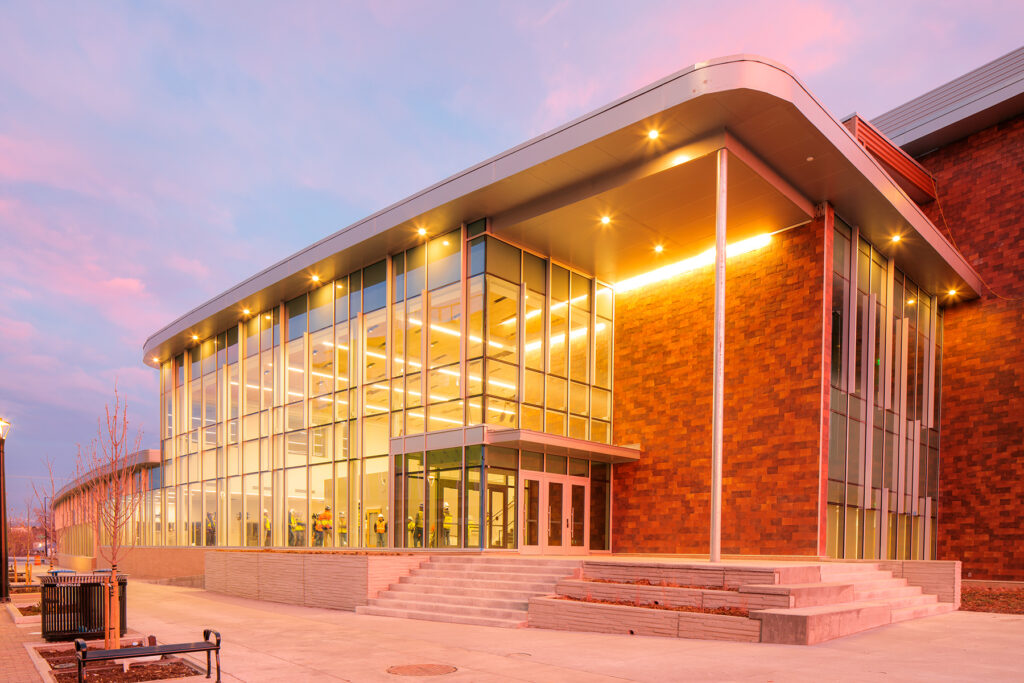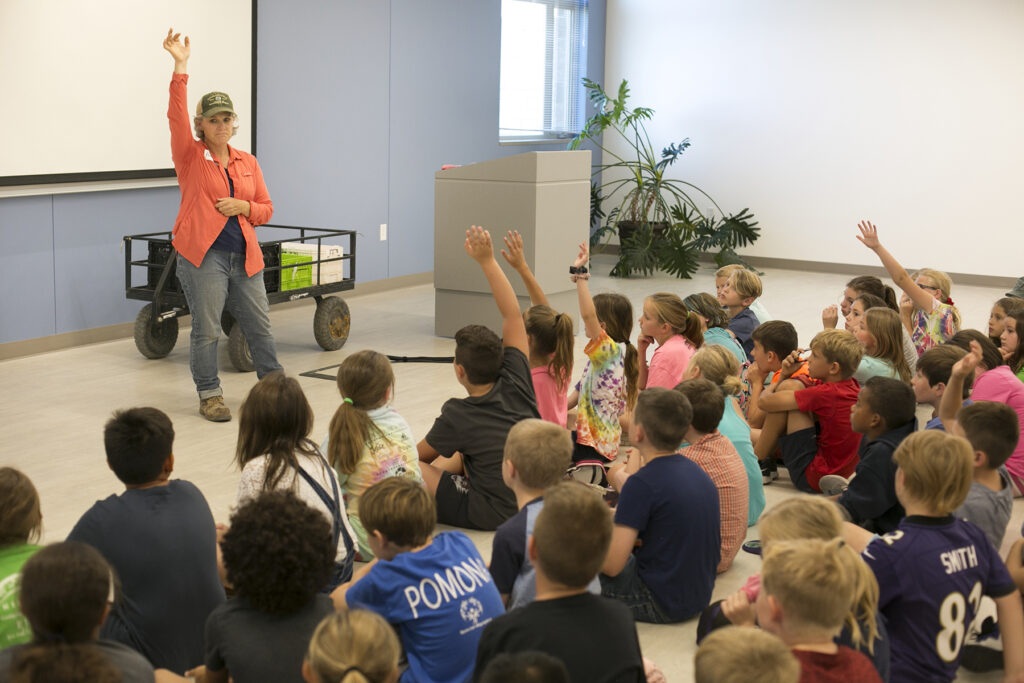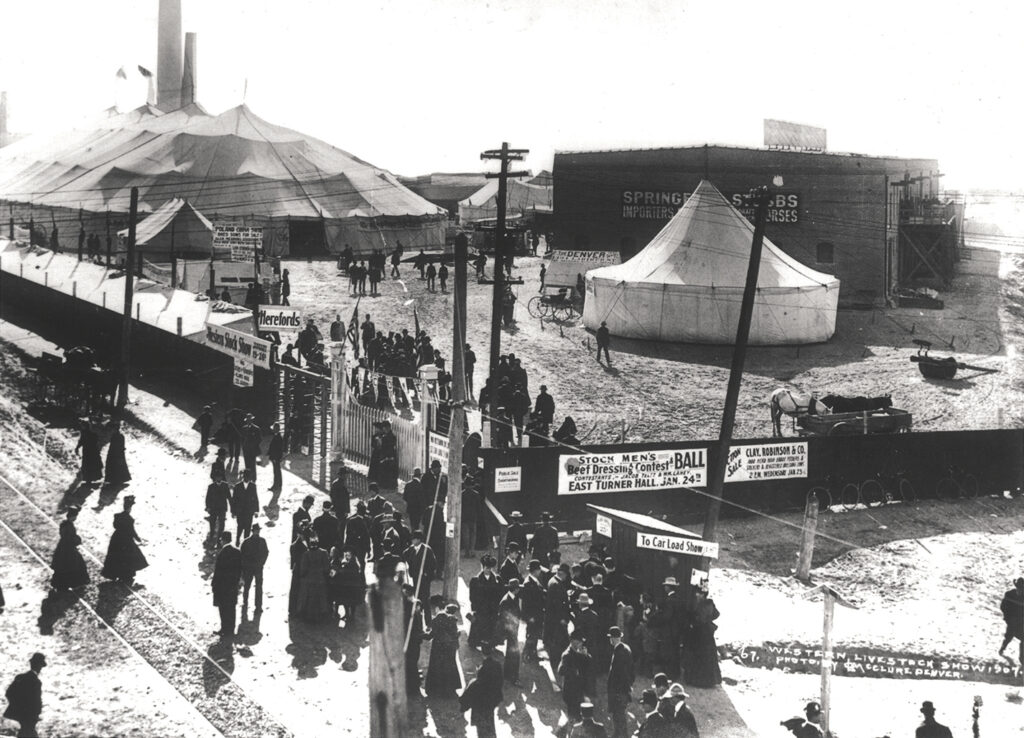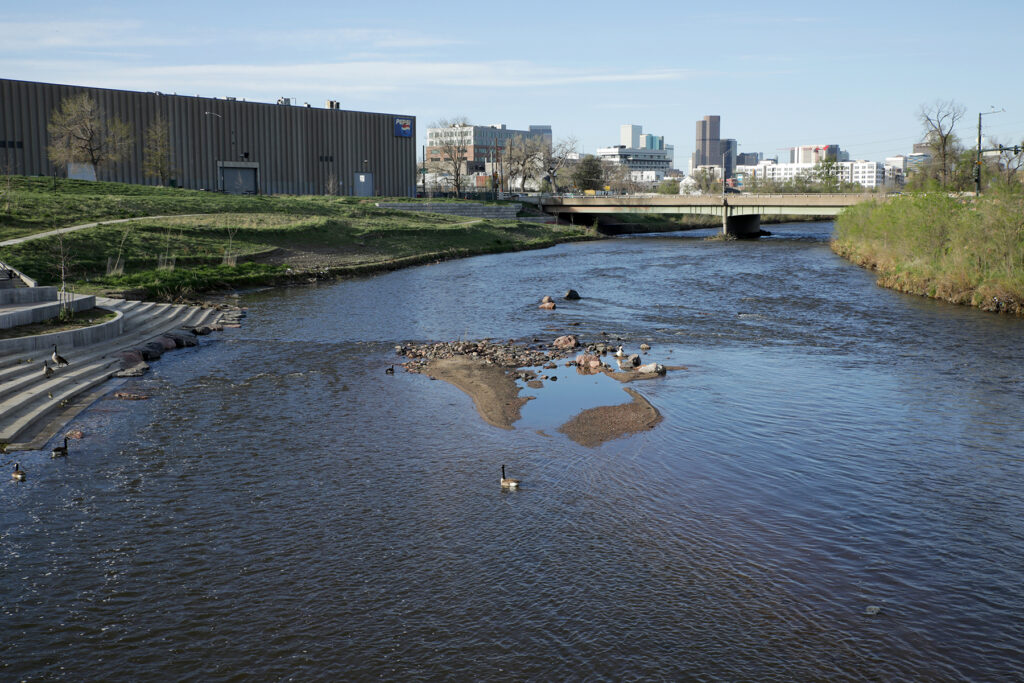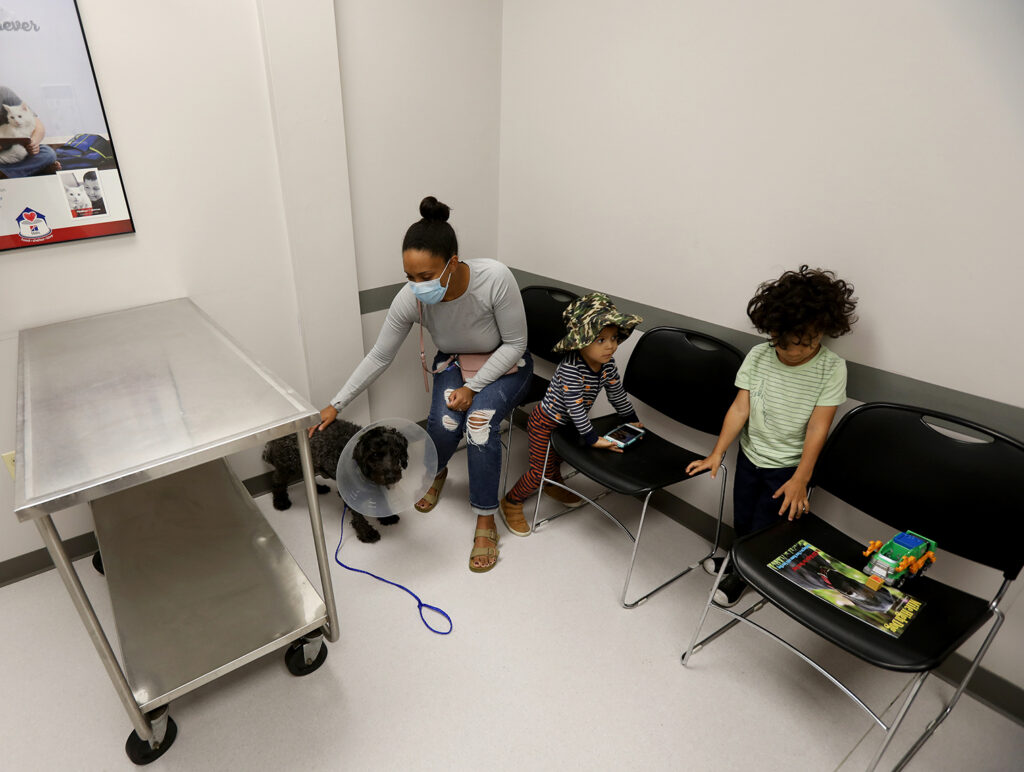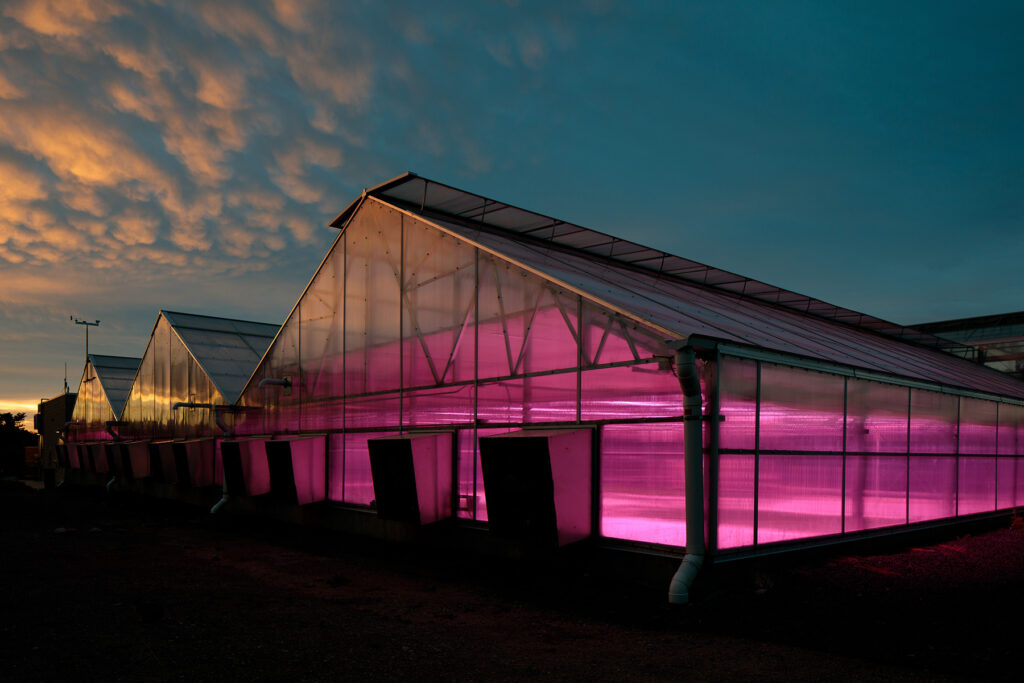A GIFT HORSE
The Temple Grandin Equine Center, in the Vida building, honors renowned professor and helps people with disabilities
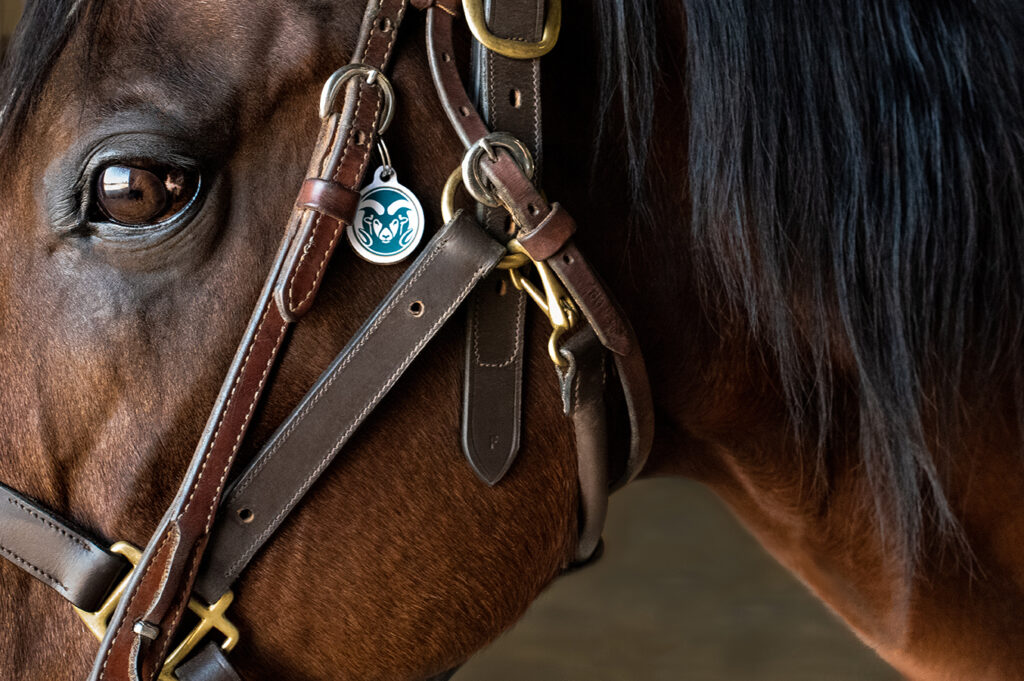
A GIFT HORSE
The Temple Grandin Equine Center, in the Vida building, honors renowned professor and helps people with disabilities
By Coleman Cornelius | Photography by Mary Nieberg | Jan. 3, 2022
SHE ARRIVED AT THE HORSE BARN LIKE MANY LITTLE GIRLS – wearing jeans and canvas sneakers, her curly blonde hair neatly plaited. But Laura Fischer came in a wheelchair, her 7-year-old frame held in place with black nylon straps. For her, horseback riding is not merely recreation. It is therapy, designed to improve her muscle strength and movement, which are severely impaired by a rare genetic disorder.
Laura’s disorder also inhibits her speech: She can utter sounds, but not words. So, as she recently waited to ride a Welsh pony named Bond, Laura used an assistive communication device to express herself. Unprompted, she tapped a sensor with her temple and picked a word to display on a computer tablet.
“Like.”
“She’s saying, ‘I like it,’” Laura’s nurse, Heather Nelson, explained. “She was so excited to come to the barn today that she was in the back of the car yelling at us because she wanted to get here as fast as possible.”
Until January, the girl’s weekly riding sessions were at a temporary site for the Temple Grandin Equine Center in Denver. The sessions, led by her occupational therapist, strengthen Laura’s core and help her develop muscle control – starting with the ability to hold up and move her head. Ask Laura to do the exercise while she’s bobbing atop Bond, and she strains with every muscle in her upper body, even lifting her eyebrows in the effort, her therapist, Maria Miller, said.
“She loves riding so much that it gives her an incentive to work hard,” the girl’s father, Reid Fischer, said. “We almost can’t talk about it the day before because she won’t sleep, she’s so excited.”
In January, Laura’s sessions will move to a new branch of the Temple Grandin Equine Center opening at the CSU Spur campus, at the National Western Center in north Denver. The equine center is among the primary programs to be housed in three buildings at CSU Spur, which has been constructed with $200 million allocated by the Colorado General Assembly. Another branch of the center opened in February 2021 at Colorado State University in Fort Collins. With its two new sites, the Temple Grandin Equine Center is poised to become a major national entry in the quickly expanding field of equine-assisted services, which aid people with conditions as varied as autism, cerebral palsy, and post-traumatic stress disorder.
At the temporary Denver site and the new Fort Collins facility, hundreds of children and adults already have received therapy for neurodevelopmental, physical, cognitive, and emotional challenges. Their sessions with horses are delivered by licensed occupational therapists, physical therapists, counselors, psychotherapists, and speech-language pathologists. As the new CSU Spur branch fully opens, and work in Denver and Fort Collins expands, the number of people helped soon will grow into the thousands.
The center is named for Temple Grandin, a renowned professor and author in CSU’s Department of Animal Sciences, who has contributed unmatched knowledge to the spheres of humane livestock handling and autism advocacy. Grandin, now 74 years old, has coped with autism in her own life. Yet, her boundless influence has spread not in spite of the condition, but because of it. In 2010, she sprang to public attention as the subject of an acclaimed HBO biopic, Temple Grandin, followed by a widely viewed TED Talk and inclusion on TIME magazine’s list of the 100 most influential people in the world.
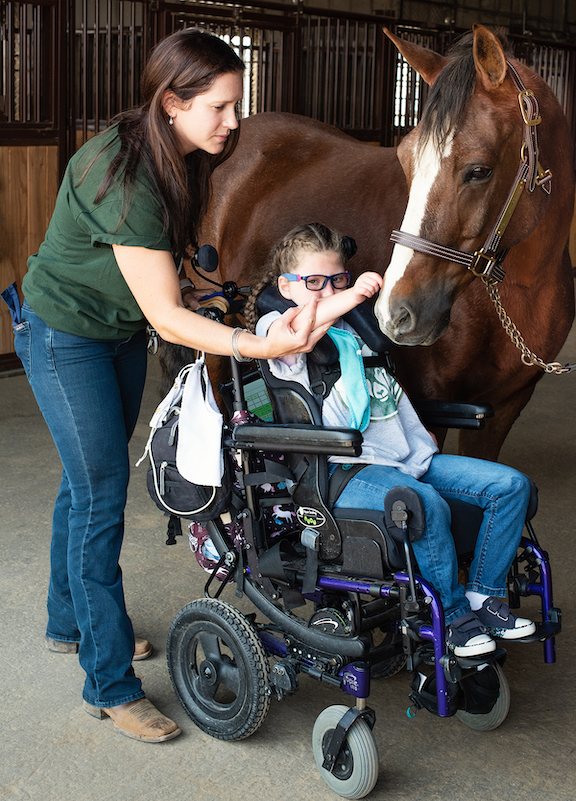
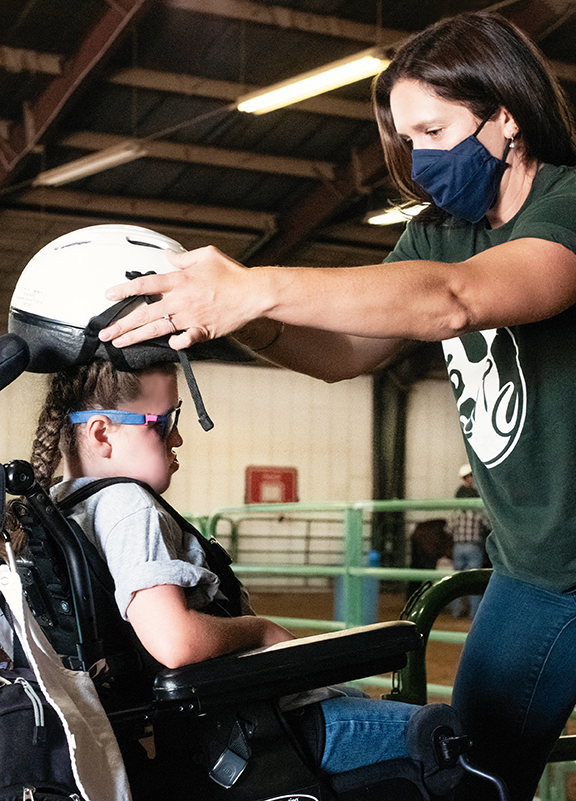
Laura Fischer receives help from occupational therapist Maria Miller, of Hand in Hand Pediatric Therapy, at the Temple Grandin Equine Center’s temporary site in Denver. The center will open its new branch in the Vida building at CSU Spur in January and will host about 7,500 therapy sessions each year for children and adults with disabilities.
“No one has done more for animal welfare than Temple,” said Jim McIngvale, a well-known Houston businessman and horseman, who has been a generous donor to the Temple Grandin Equine Center in Fort Collins. “She has given a voice to the voiceless and hope to the hopeless,” he continued, referring to people with disabilities, as he spoke to guests at an open house in September. “She is helping people and helping animals to have a better life.”
Growing up near Boston in the 1950s and ’60s, Grandin struggled with autism spectrum disorder. Autism was little understood at the time, and Grandin would have been institutionalized without the dedicated efforts of her mother and a few key teachers who intervened with support, she has written in bestselling autobiographies. She could not speak until she was 4, and her behavior often veered from socially awkward to violent. She was expelled from middle school for throwing a book at a girl who taunted her.
Then, while attending a private high school, Grandin found her footing by working with and riding horses at the school barn. “Horses saved me,” she often says. The headmaster entrusted Grandin with daily feeding and barn chores for the school’s entire stable of eight horses and a burro. Every day, she rode a mare named Bay Lady and won ribbons at local horse shows. The work, confidence, and friendships she experienced at the barn – coupled with intriguing projects assigned by her science teacher – set Grandin on a path defined, for the first time, by possibility. “I learned responsibility and had friends through horses, and horses were a refuge away from bullying,” she recently said.
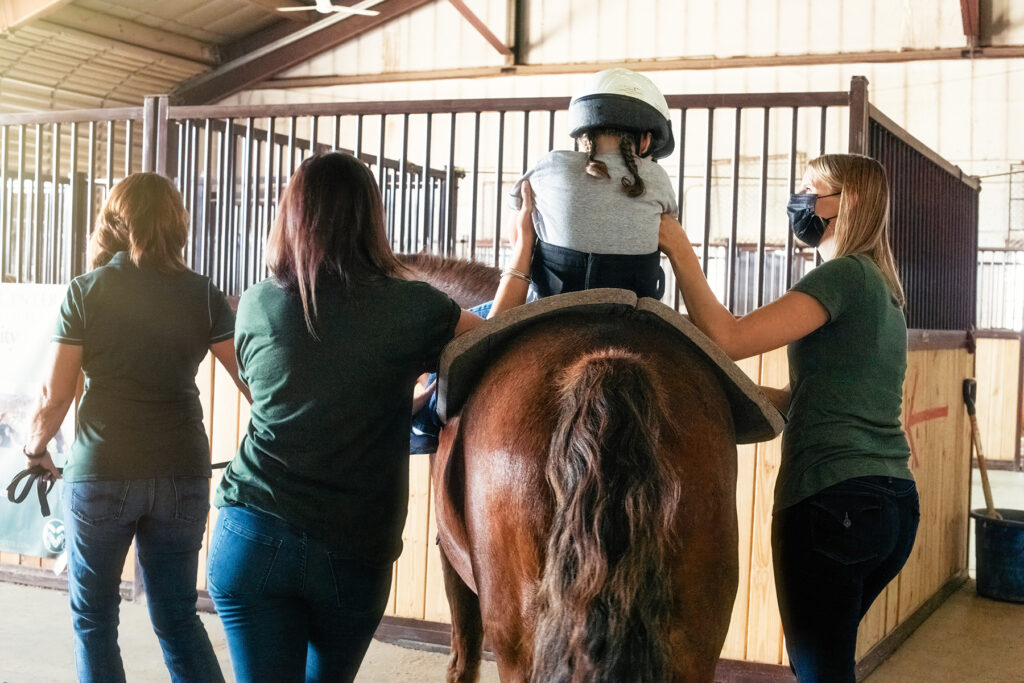
Laura Fischer, above, has her weekly therapy session atop a pony named Bond. Her support team includes, from left, Debbie Mogor, program coordinator, Temple Grandin Equine Center in Denver; Maria Miller, occupational therapist; and Caiti Peters, the equine center’s research manager.
Her equine experiences led to Grandin’s fascination with the behavior and welfare of cattle and other farm animals, an interest deepened during trips to her aunt’s ranch in Arizona. Grandin soon realized she thought differently than most people – visually, in pictures – and that insights from her autism were an asset in working with livestock, because animals also respond to visual stimuli. “It was precisely her sense of the common ground (in terms of basic sensations and feelings) between animals and people that allowed her to show such sensitivity to animals, and to insist so forcefully on their humane management,” the late Oliver Sacks, an eminent neurologist, wrote of Grandin in an article in The New Yorker in 1993.
After attending college and earning master’s and doctoral degrees in animal science, Grandin started working for cattle feedlots in the West, the genesis of her trademark Western shirts and scarf ties. She began designing low-stress livestock handling equipment with nonslip surfaces, round corrals, and curving chutes that were both less distressing for animals and far more efficient for producers. Determined to give food animals a decent life and painless death, Grandin persevered through sexism, skepticism, and even ridicule to demonstrate the value of her designs.
Over time, Grandin’s concepts, handling systems, and associated auditing tools have been adopted as gold standards around the globe, in many cases by beef producers and meatpackers that supply the world’s largest grocers and fast-food chains. If you’ve eaten a hamburger, you’ve surely been an end user of Grandin’s work.
Her story is widely embraced as proof positive that innovation springs from different kinds of thinking and diverse personal experiences – a point Grandin stresses in countless invited talks.
Our research will provide evidence-based results to lead practice and education, so that more people benefit. Ultimately, to advance this industry, you have to show the science behind it. This is health care that's improving people's lives.
— Adam Daurio, director, Temple Grandin Equine Center
“In the early ’70s, when I started, I got right down in the chutes to see what cattle were seeing. People thought that was crazy. A coat on the fence would make them balk, shadows would make them balk, a hose on the floor, a chain hanging down. People weren’t noticing these things. … Visual thinking gave me a whole lot of insight into the animal mind,” Grandin said during her 2010 TED Talk, which has been viewed more than 6 million times. Her talk, titled “The world needs all kinds of minds,” urged support for people with different approaches to problem-solving. “We’ve got to work with these kinds of minds,” she said, “because we absolutely are going to need these kinds of people in the future.”
In 1990, Grandin joined CSU, where she has conducted groundbreaking research and taught classes in livestock behavior and humane handling. She continues to tirelessly write and speak about autism, captivating audiences with uncanny insights based on her own life. In many cases, she has offered parents a first-time glimpse at the inner lives – and potential abilities – of their autistic children. Her most recent book, published in September, is Navigating Autism: 9 Mindsets for Helping Kids on the Spectrum. It starts with a basic premise: “Every child is more than autism.”
When recently describing the motivation for her work, Grandin said: “We’ve got to do things in this world to make the world a better place – not just think about it, but do it.”
Her remark could be a motto for the Temple Grandin Equine Center. It was built to honor Grandin and to expand university expertise in occupational therapy and equine programs; she has consulted on facility design. The equine center is notable for its three-part focus: It hosts therapy sessions for children and adults, including many with autism. It is an unparalleled site for university research examining benefits and best practices in equine-assisted services. And, the center is home to experiential course work for CSU students studying equine sciences, occupational therapy, and other disciplines.
The center’s temporary site in Denver has hosted about 1,500 therapy sessions per year. That number will balloon to about 7,500 sessions at the new facility at CSU Spur, said Adam Daurio, center director. Meantime, the center’s branch in Fort Collins will eventually host about 5,500 therapy sessions each year and will serve as a hub for education and research.
In Denver, sessions will rely on a herd of 20 well-trained horses and a state-of-the-art facility built and managed by the university. Several Metro Denver organizations will use the site to provide equine-assisted services for their clients with disabilities.
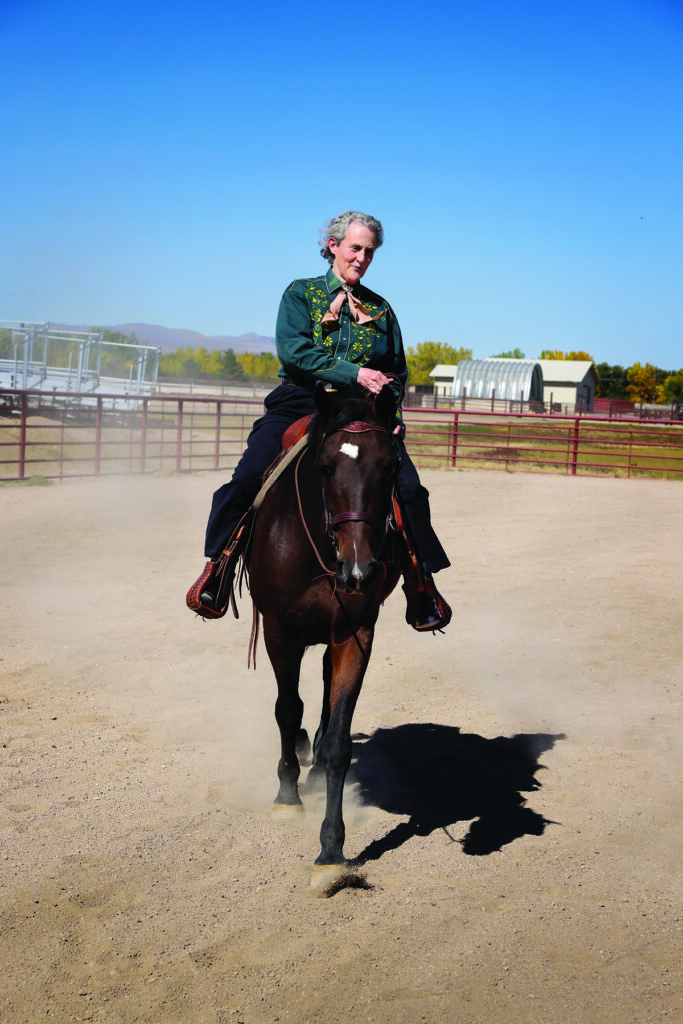
Horses were my salvation. One of the few places I had friends was riding at the school barn. Working there gave me a purpose in life and taught me responsibility. I was really proud of that.
— Temple Grandin, professor, CSU Department of Animal Sciences
Even with the scope of its programs, the center is singular in its research mission, Daurio said. CSU faculty are evaluating how and why equine-assisted services work; in this way, therapies may be duplicated among people with a variety of disabilities and challenges. “Our research will provide evidence-based results to lead practice and education, so that more people benefit,” Daurio said. “Ultimately, to advance this industry, you have to show the science behind it. This is health care that’s improving people’s lives.”
A number of parents have told Grandin their autistic children spoke for the first time while interacting with horses. The Temple Grandin Equine Center aims to transcend anecdotes in a health care field whose practitioners delineate their work from recreation. “We’re trying to systematically isolate what horses do – and how – and how to replicate benefits during interventions,” said Caiti Peters, an assistant professor of animal sciences and licensed occupational therapist. She manages research for the equine center. “Research at this level validates what we do as therapists, so we’re establishing viable treatments through peer-reviewed science,” Peters said.
Grandin said she is eager to see the results: “Research shows that it’s worth the time and the effort and the money,” she said.
The work is well underway. Relying on grants, CSU faculty already have published nearly two dozen papers related to therapy with horses, many co-authored by Peters and her retired colleague Wendy Wood. For instance, a study published in September 2021 in the Journal of Autism and Developmental Disorders examines the preliminary efficacy of occupational therapy in an equine environment for children with autism spectrum disorder. Another paper is a primer for practitioners: It outlines a consensus on the best terminology for therapeutic services that incorporate horses.
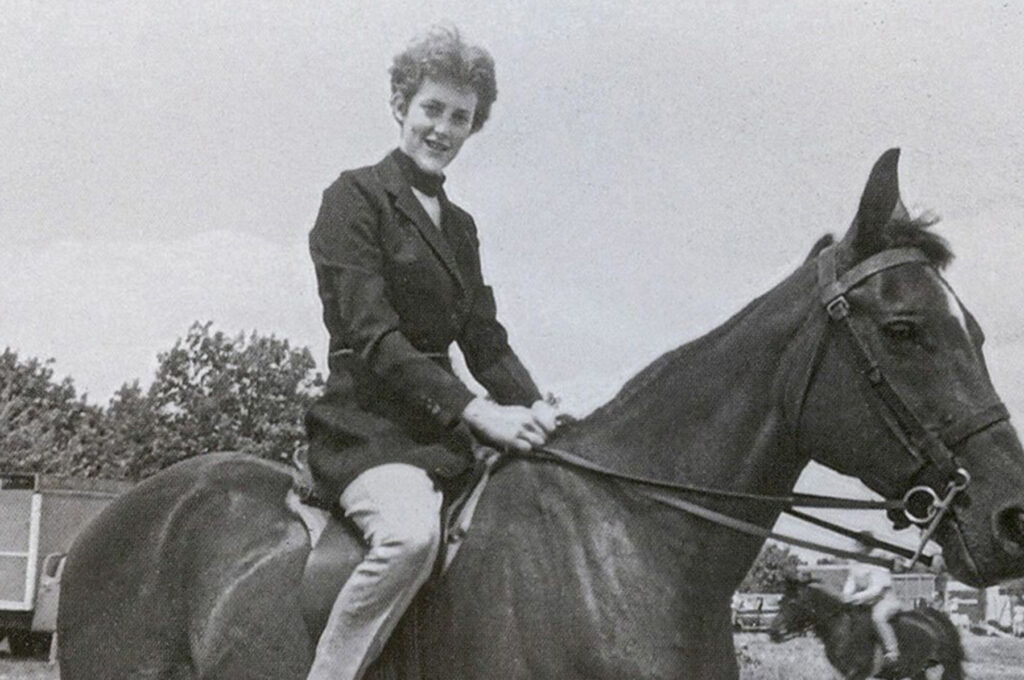

CSU Professor Temple Grandin inspired the new equine center. Grandin has coped with autism spectrum disorder throughout her life and benefited from working with and riding horses as a teenager; she went on to an influential career in humane livestock handling. Photo on left: Submitted. Photo on right: William A. Cotton / Colorado State University
CSU Professor Temple Grandin inspired the new equine center. Grandin has coped with autism spectrum disorder throughout her life and benefited from working with and riding horses as a teenager; she went on to an influential career in humane livestock handling. Photo on top: Submitted / Photo on bottom: William A. Cotton / Colorado State University
Yet, serious as it is, science can be joyful. And it would be hard to find more exuberance than that shown by Jake Johnson when he recently visited the Temple Grandin Equine Center at its temporary site in Denver for his weekly occupational therapy session. “Purr-fect!” Jake exclaimed with a grin, as he caught a ball tossed by his therapist during warmup on a mechanical horse.
Jake, 24, lives with his family in Evergreen and has received occupational therapy on horseback for seven years to ease disabilities resulting from traumatic brain injuries at birth. Jake has cerebral palsy, which impedes his movement and balance; he also suffers from seizures and has cognitive and sight impairments. His therapy improves Jake’s strength, accomplished with the effort to stay upright while undertaking simple exercises astride a moving horse. The sessions also improve his sensory integration – the brain processes that synthesize what we see, hear, and feel – resulting in greater ability to understand and respond to others. For Jake, the therapy has noticeably increased his ability to pay attention and verbally respond, his parents and therapist said.
“I really see some amazing results with equine-assisted therapy. Kids who don’t want to be touched will hug you after a session,” Joan Eckrich, Jake’s occupational therapist, said. “I see progress so much faster here.”
Like Laura Fischer, Jake is motivated during his sessions because he so thoroughly enjoys riding his therapy horse, Harley, a bay Quarter Horse gelding. Like several others in the center’s stable, Harley was a winning show horse before taking on a new job in therapy – a role that requires a horse with a warm, willing, and unflappable disposition.
“The synergy between the rider and the horse has exponential benefits,” Susan Johnson, Jake’s mom, observed. She, her husband, and their other two children also are avid riders. “The two individual energy systems meld into each other. It’s really kind of a magical thing.”
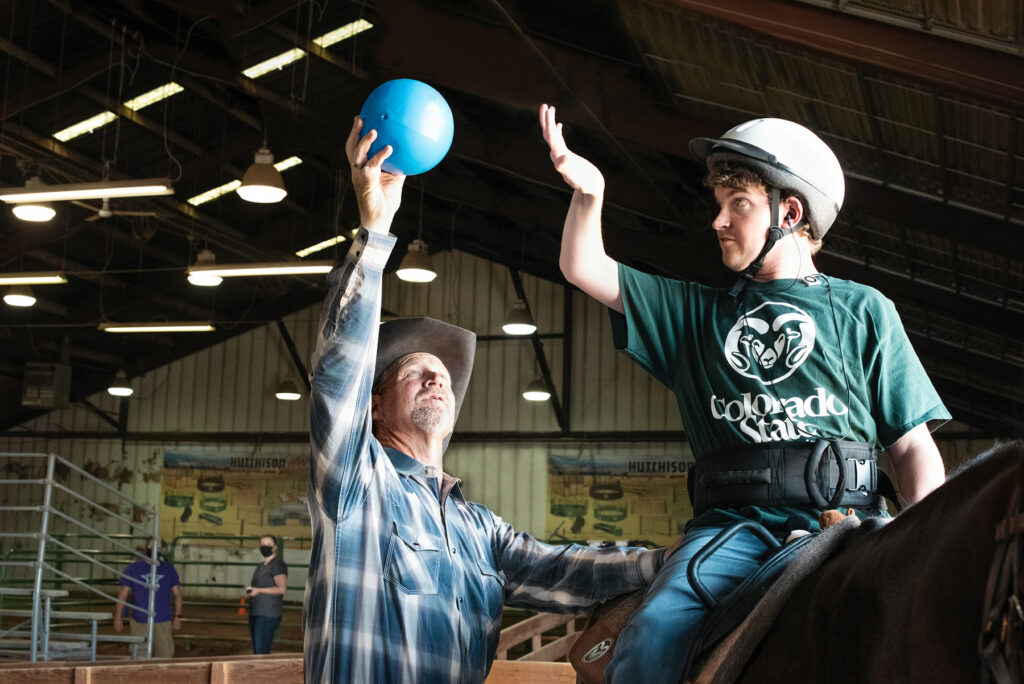
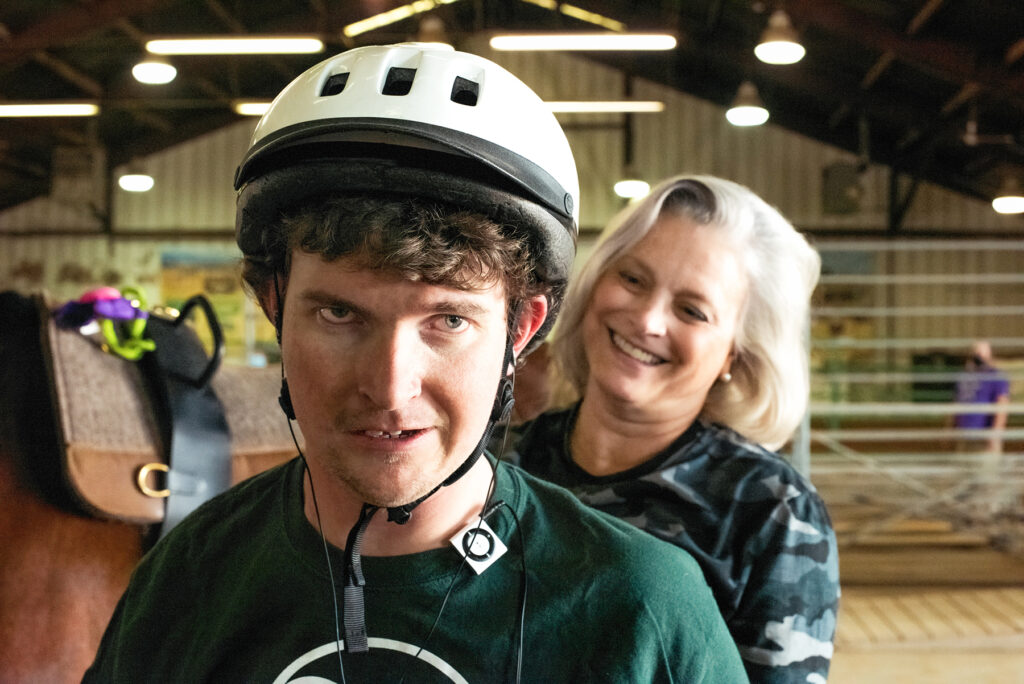
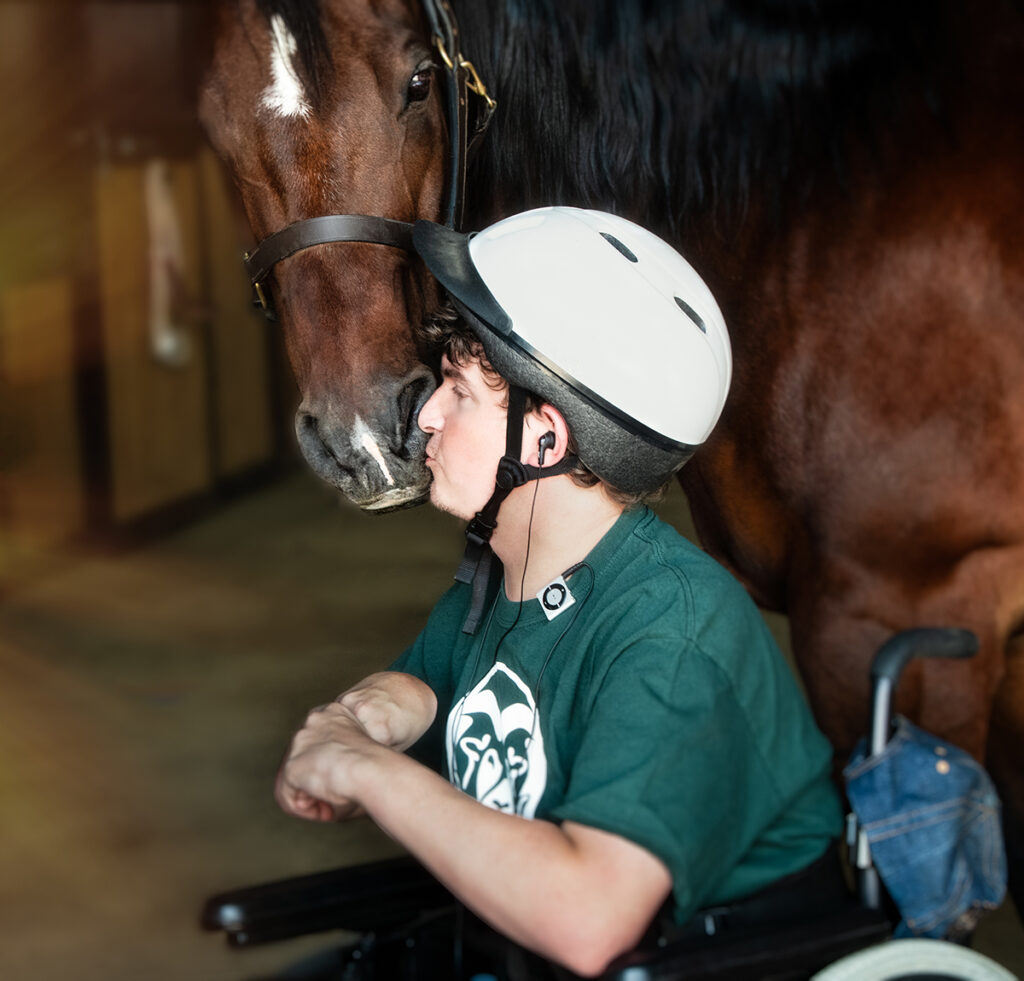
Clockwise, from top left: Jake Johnson reaches for a ball held by his dad, Mark Johnson. Jake has developed a close attachment to a therapy horse named Harley at the Temple Grandin Equine Center’s temporary site in Denver. Jake works with occupational therapist Joan Eckrich, of Sundance Therapy, and will be among those receiving therapy at the new branch of Temple Grandin Equine Center at CSU Spur.
Top: Jake Johnson reaches for a ball held by his dad, Mark Johnson. Middle: Jake has developed a close attachment to a therapy horse named Harley at the Temple Grandin Equine Center’s temporary site in Denver. Bottom: Jake works with occupational therapist Joan Eckrich, of Sundance Therapy, and will be among those receiving therapy at the new branch of Temple Grandin Equine Center at CSU Spur.
Once atop Harley in the riding arena, Jake rode with a supporting cast including his therapist, dad, and the center’s barn manager. Eckrich set up a challenge: She propped a plush moose toy on the arena fence, then instructed Jake to maneuver over and grab the toy.
“What do you tell Harley?” she asked Jake.
“Walk on!”
“Oops,” Eckrich told Jake, when his mount overshot the target. “Now you need to back up. Can you tell Harley to back?”
“Back!” Jake called out, as his helpers cued the horse to step backward several feet.
“Now, grab the moose,” Eckrich instructed Jake, as he reached for the toy. “Good job! You got it. That was the biggest reach I’ve ever seen.”
“Purr-fect!” Jake exclaimed gleefully.
The exercise was more than a game, Eckrich later explained. It had required Jake’s attention, communication skills, and fine motor coordination.
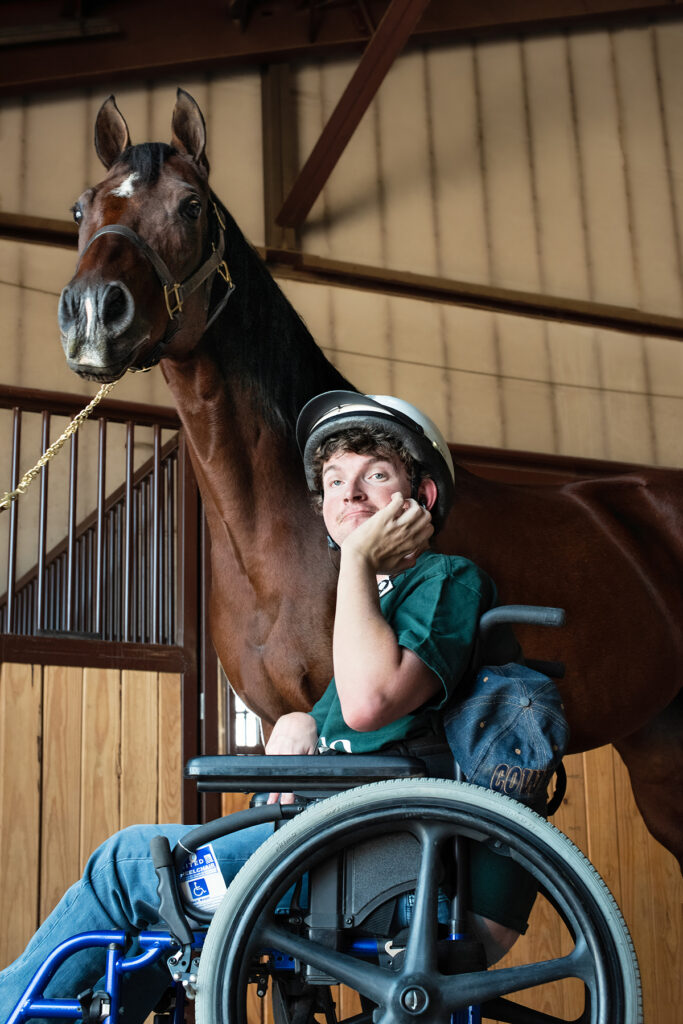
The synergy between the rider and the horse has exponential benefits. The two individual energy systems meld into each other. It's really kind of a magical thing.
— Susan Johnson, mom of rider Jake Johnson
After Jake’s session, it was Laura’s turn in the ring; she would work on muscle strengthening and head control by riding her chestnut pony facing forward, backward, and sideways. Then, with her therapist cradling her head, Laura lay back on the pony as Bond continued to walk. The move requires significant exertion, especially for a child who spends most of her waking time in a wheelchair.
“There you go!” enthused Peters, the research manager, while Laura balanced on her back.
“You did so good, Laura,” her dad said, as his daughter settled back into her chair. The word “like” was still displayed on the screen of her communication device.
Nelson, Laura’s nurse, said it is gratifying to see the girl’s strength and physical abilities improve. But Laura’s horseback therapy also has benefits that cannot be measured, she said.
“It’s freedom,” Nelson said. “It’s everything. She’s able to be a kid on the horse.”
SHARE

